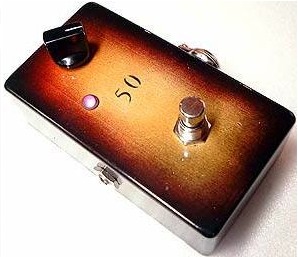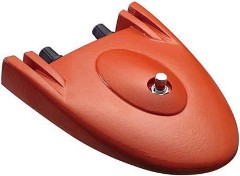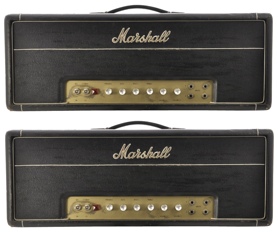 Feeling like your tone needs more dimension, more dynamic, and just more oomph? What you can do if you have more than one amp is to play them in stereo and you’ll get closer to that fullness you so desire. Continue reading Playing your Guitar in Stereo
Feeling like your tone needs more dimension, more dynamic, and just more oomph? What you can do if you have more than one amp is to play them in stereo and you’ll get closer to that fullness you so desire. Continue reading Playing your Guitar in Stereo
Tag: hendrix
FoxRox Aquavibe Review
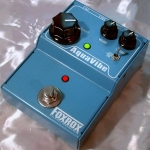 As promised, I said I would post my Aquavibe review. I finally got it, and have had a chance to play with it for about a week now, and I must say, I am very impressed. I also own a BBE Soul Vibe, and after some comparing, really there was no competition. The Aquavibe is far better. Enclosed in a cool blue casing with green LED, it sure looks as awesome as it sound. So lets get to the features, as well as some tips and tricks!
As promised, I said I would post my Aquavibe review. I finally got it, and have had a chance to play with it for about a week now, and I must say, I am very impressed. I also own a BBE Soul Vibe, and after some comparing, really there was no competition. The Aquavibe is far better. Enclosed in a cool blue casing with green LED, it sure looks as awesome as it sound. So lets get to the features, as well as some tips and tricks!
One thing to note is that the Aquavibe definitely sounds better with single coil pickups, compared to humbuckers, but thats just my opinion. Another thing I noticed is that the Aquavibe is extremely quiet! I found my soul vibe to get annoying when stacked with other pedals. Definitely not the case with the Aqua.
In terms of tone, this pedal really cops some Hendrix vibes. I was able to dial in Machine Gun settings, and Hey Baby settings in the vibrato mode. I also got some nice Pink Floyd sounds as well (Breathe). But whats great about the Aquavibe is that it does much more than the other vibe clones out there. With the Center knob, one can dial in variations of the sweep. Since the original Univibe varied from unit to unit, this Center knob helps to get a different range of vintage Univibes! Very awesome, especially if you wanna tweak it a bit so no one else has your exact vibe tone.
I like how the speed dial is big enough to control with your feet. I however still prefer to use an expression pedal, but if you don’t wanna spend the extra cash, you really don’t have to. The speed knob has an incredible range going from really slow phasey sounds to super fast underwater tones. The width knob controls how pronounced the effect is. You can go from a very subtle effect, to an exaggerated sweep.
Chorus Mode: So this is your typical univibe mode. I found the chorus on the Aquavibe to be very nice, and not too overpowering. Based on the clips, the Megavibe may have a slightly better chorus sound, but its hardly noticeable. And when you have Randy Hansen doing clips for you, of course its gonna sound good! Still, the aquavibe does some impressive vintage univibe tones.
Vibrato Mode: Probably the best I’ve heard in terms of Univibe clones. This mode is really great and can get really psychedelic! What I really love is how well it keeps your original guitar tone, especially in vibrato mode. If you put in a a subtle sweep, you can’t even really notice any tone coloration!
Awesome Aquavibe Settings:
Chorus mode
Great authentic univibe: Speed: 12:00, Width: 1:00, Center: 11:45
Great underwater tone: Speed: 3:30, Width: 3:30, Center: 12:00
Vibrato Mode
Psychedelic vibe: Speed: 2:00, Width: 1:00, Center: 11:45
Aliens have landed!: Speed: 5:00, Width: 5:00, Center: 12:00
As you can tell, I’m having a lot of fun with this pedal. Every time I play it, I find a new sound. The FoxRox Aquavibe scores a 10 in my books. I find that its a very inspiring pedal, and really helps in the creative flow of things. If you are planning on getting one, get on the waiting list now.. its about a 1 year wait, but totally worth it!
If you already have an aquavibe, post some settings you like (along with a description) in the comments section.
Fender Standard Jazz Bass Review
 I recently purchased a Fender Jazz Bass while at a store comparing bass tones. It was evident right away that its tones was the most transparent, that is to say, you could clearly hear each note. Its dynamics were almost reminiscent of a strat. I knew this was the Bass for me when playing some blues lines.
I recently purchased a Fender Jazz Bass while at a store comparing bass tones. It was evident right away that its tones was the most transparent, that is to say, you could clearly hear each note. Its dynamics were almost reminiscent of a strat. I knew this was the Bass for me when playing some blues lines.
I turned the amp up pretty loud to push the tubes a bit. It really made this guitar sound alive. If you want amazing bass tone, I highly recommend a tube amp, especially for this guitar. It really gives a 3-dimensional sound.
Not only does the Jazz Bass cater to alot to famous blues and jazz players, you’ll also see this guitar in a heavier setting. Jimi Hendrix, said to be one of the loudest guitar players ever, was accompanied by Billy Cox in 1969/70 to join his band and tour. You can hear some live stuff on youtube, particularly at the isle of wight in 1970. Cox used the Jazz Bass predominantly with hendrix, and his funky, soulful playing really vibrated well with the Jazz Bass.
My current set up with my Jazz Bass is running through a 70s’ Traynor BassMate equipped with EL-84 power tubes. Again, if you want to make the most of this guitar, or any guitar, get a nice tube amp. When those tubes get hot, the tone is unbelievable. .
All I can say is, if you are into blues, jazz, rock, or whatever really, try out the Fender Jazz Bass. It’ll bring life to your sound. View the Fender American Jazz Bass on Amazon.
RMC Real McCoy Teese Picture Wah Review
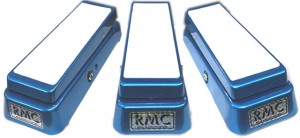 I’m not gonna lie, the RMC4 Picture Wah by Geoffrey Teese is probably one of the best wah pedals on the market! Lets take a look at what this pedal has to offer..
I’m not gonna lie, the RMC4 Picture Wah by Geoffrey Teese is probably one of the best wah pedals on the market! Lets take a look at what this pedal has to offer..
As you can see, it has a blue sparkle encasing, with a white foot pad. Pretty cool looking if you ask me. I’ve owned this pedal for 2 years now, so lets get on to the review.
I plugged in my strat into a nice clean amp. I pressed the wah down to turn it on, and immediately I was getting some watery wah tones. In the clean mode, it is not very vocal, rather more of a funky type of vibe.
I really wanted to have the vocal-like vintage wah quack made famous by Hendrix and Clapton. Once I put my amp into overdrive, I quickly got that tone! Very vocal like, and miles ahead of any mass produced wah made today. Like any person testing out a wah, I went right into the intro of Voodoo Child. This wah definitely gets you there.
Another good application of the wah is to turn it on, leave it in a position, and just play your guitar with that tone. You can get some very bright trebly tones that work great for solos, or some really bassy, smooth tones that I’ve actually also solo’d with.
Now whats really great about the RMC Picture Wah is pairing it up with a Fuzz pedal. The Picture Wah has encorporated a buffer in order to make it work properly with a fuzz, which most wahs aren’t capable of doing. When you really crank your amp, and your fuzz,the wah can really help when trying to have controlled feedback. Very cool to play around with, as it adds another dimension to your tone.
Basically the RMC Picture Wah is an excellent pedal, and really captures some authentic vintage wah tones.
Why get a Custom Guitar Neck?
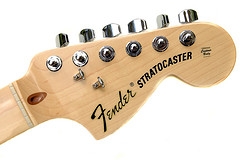 Often overlooked, the neck on a guitar has a definite effect on tone. As well, having a greatneck that suits you specifically will aid in playability, essentially letting you get some sounds that you didn’t think were possible. Lets talk about why a custom neck is the way to go, and how to go about getting one.
Often overlooked, the neck on a guitar has a definite effect on tone. As well, having a greatneck that suits you specifically will aid in playability, essentially letting you get some sounds that you didn’t think were possible. Lets talk about why a custom neck is the way to go, and how to go about getting one.
There are custom guitar-part sites that allow you to get a custom built neck for most electric guitars. The best two companies for this are Musikraft and Warmoth. You can customize pretty much everything on the neck, so it fits your hand perfectly. Or you can get a neck that closely resembles a favorite guitar player for example.
Being a big Jimi Hendrix fan, I could see that having his guitar upside down and restrung affected his tone. Not only with the reverse headstock changing the string lengths, but also the size of his headstock. At Musikraft. you can order CBS style headstocks which are bigger and more badass. Not to mention they are a bit heavier, which is said to increase sustain of the guitar.
Another great reason to go custom is that you can choose the shape of the neck. From soft Vs to medium Cs, you can get the right neck for you. With Jimi’s style of playing, having his thumb wrap around the neck to play the low E string was a huge part of his musical style. Certain neck shapes make this more possible and comfortable.
Are you a vintage junkie, but can’t afford a vintage guitar? I’m right there with you. You can get the necks with nitro finishes and vintage sized frets.
All in all, if you’re playability doesn’t seem great on your current set up, try changing the neck, and notice a profound difference that’ll keep you playing for hours at a time.
Lovepedal COT 50 Burst Review
 A couple years ago, I was watching some videos from ProGuitarShop on youtube. They demo many different pedals that they sell in their online shop, and I came across the Lovepedal Cot 50 Burst. I became very intrigued as Andy (from ProGuitarShop) started playing ‘Them Changes’, a Band of Gypsies track. I was sold. Right away, you could see why this pedal was packing mojo. So lets take a closer look at what this pedal is all about.
A couple years ago, I was watching some videos from ProGuitarShop on youtube. They demo many different pedals that they sell in their online shop, and I came across the Lovepedal Cot 50 Burst. I became very intrigued as Andy (from ProGuitarShop) started playing ‘Them Changes’, a Band of Gypsies track. I was sold. Right away, you could see why this pedal was packing mojo. So lets take a closer look at what this pedal is all about.
As you can see from the picture, there is just one dial, making this a very simple pedal. This IMO, is a good thing, as if there is too much tweakability, there would be a ton of time spent tweaking, and less time spent playing. The dial on the COT 50 Burst controls the drive.
Just so we’re all on the same page, the COT 50 Burst isn’t just a simple overdrive pedal, rather its more of a preamp so to speak. Its goal is to cop tones from a late ’60s Marshall Plexi loaded with 6550s. While this is a pretty big claim to make, I think it does a pretty good job, especially for a pedal.
I hooked up my strat (Fender MIJ ’68 Reissue), and played the COT 50 Burst through a pretty clean amp. Once I engaged the pedal, I was greeted with some favorable tone coloration. It gave my guitar more texture. As I turned up the dial, I got some great overdrive tones, very subtle, sounding more like a cranked marshall amplifier. When I turned the dial all the way up, I was almost in fuzz territory. When I turned the dial all the way down, it really kept the actual sound of my guitar, with a slight coloring as if I was playing through a different amp. At this point, I can say, the pedal is doing what it says it does. Awesome!
I then tried stacking it with other pedals, and started to see just how great this pedal was. I was playing a fuzz pedal straight to my amp, but since my amp has EL-84s, the fuzz wasn’t really sounding the way I was hoping it would. I wanted a good 60s’ style Hendrixy fuzz tone, and I just wasn’t getting it. Then I added in the COT 50 Burst right after the fuzz pedal, and immediately I was in Hendrix territory. Also at this point, I was getting some great controlled feedback at low volumes. Very awesome!
So basically, if you really want a Marshall Plexi sound, but can’t afford the amp itself, just get the Lovepedal COT 50 Burst, and you will be close enough to the sound that you are trying to catch!
Roger Mayer Axis Fuzz Review
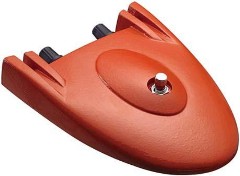 As one of the most sought after pedals of all time, the Roger Mayer Axis Fuzz has become an instant classic since Jimi Hendrix used it on his album Axis: Bold as Love. I remember the day I went to Moog Audio in Toronto, Canada to try out the pedal. I a/b’d the axis fuzz against many other fuzz pedals, such as the OX Fuzz, the Zvex Fuzz Factory, and the Fulltone ’70 Fuzz. Right off the bat, I knew the axis fuzz was a clear winner. Why, you ask?
As one of the most sought after pedals of all time, the Roger Mayer Axis Fuzz has become an instant classic since Jimi Hendrix used it on his album Axis: Bold as Love. I remember the day I went to Moog Audio in Toronto, Canada to try out the pedal. I a/b’d the axis fuzz against many other fuzz pedals, such as the OX Fuzz, the Zvex Fuzz Factory, and the Fulltone ’70 Fuzz. Right off the bat, I knew the axis fuzz was a clear winner. Why, you ask?
It’s quite simple. The axis fuzz has more textures, more depth, and more tonal variation. I was able to get a wide variety of distinctly different tones, just from the the two knobs on the pedal. One knob controls the volume output, and the other controls the fuzz/drive. My first instinct was to crank both knobs, and instantly I was in fuzz heaven. Infact it was so over the top, that my amp was feedbacking like crazy!
After playing some purple haze on my strat with an extended out-of-control solo, I decided I needed to calm things down a bit. I turned the fuzz knob pretty far down, so there was just a touch of fuzz, but kept the volume knob fairly high, around 3 o’clock. This put me into the chimy-ist, bell-like tone I’ve heard from an amp! I was getting amazing clean tones that had added texture from the touch of fuzz I had on. Also the guitar was more touch sensitive, letting me do hammer-ons and pull-offs with complete ease, while maintaining that sweet clarity. I now realize how Hendrix got some of his great sound clean tones. It was crazy to hear a marshall amp have fender-like cleans, but with more mid-range.
I decided it was time to get back to fuzz mayhem. I set the knobs high, but kept my guitar volume low. I was surprised how clean the tone was with my guitar volume down, and as I turned it up, it just got dirtier and dirtier. As I got into really fuzzy territory, I could get some great harmonics, sustain, and controlled feedback. The best is when you bend a really high note with plenty of vibrato, and wait for it to change into a screaming upper harmonic feedback tone. What a great way to end a song. My final thoughts on this pedal.. amazing!
Here are some helpful hints that will help you use the Roger Mayer Axis Fuzz better. Since it is sort of an instrument in itself, there are a few things you need to learn to get it working the way you want it to:
1) Crank your amp! This fuzz needs a cranked amp in order to sound good! Otherwise the fuzz with sound thin and shrill, which is very unpleasant to the ears. If you can’t go too loud, try stacking the fuzz with an overdrive or preamp pedal.
2) As mentioned, control the fuzz with your guitar’s volume pot. This will ensure the smooth transition between rhythm and solos.
3) Tweak the pedal a bit and find a great setting that works with your rig.
4) Use a strat! Single coils seem to work best with this fuzz. In addition, having a whammy bar just adds to the fun. Dive bombs become super powerful with the axis fuzz.
5) Let your guitar sing. Hold notes longer with the fuzz while using vibrato. With the extra sustain on tap, you can really fill the space, and the vibrato will help add some nice overtones.
If you haven’t already played an Axis Fuzz, try it out. You will not be disappointed! View the Axis Fuzz on Amazon.
Roger Mayer Axis Fuzz Sound Clip (Recorded on iPhone)

